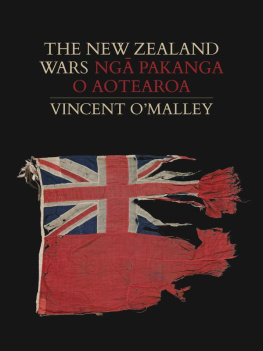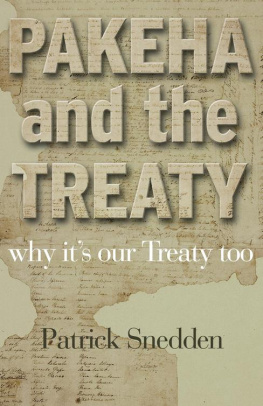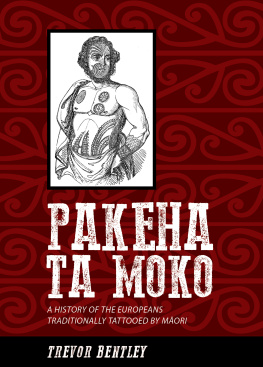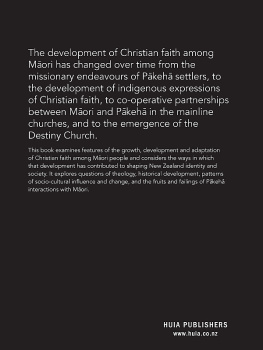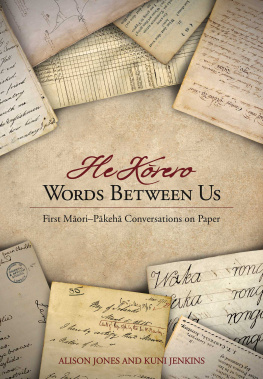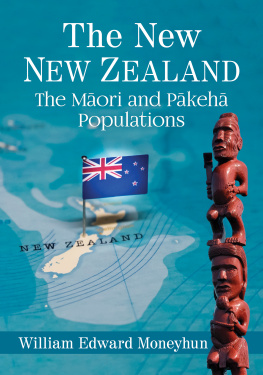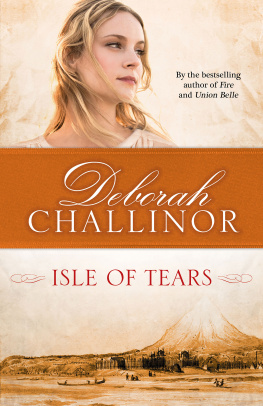ACKNOWLEDGEMENTS
The supposed exceptionalism of much New Zealand history can sometimes seem like a self-fulfilling prophecy. Everything looks unique if you fail to search for parallels elsewhere. This book draws unashamedly on a wider international historiography of indigenous and European encounters for its conceptual underpinnings. Greg Dening and Nicholas Thomas are important here. But it is the North American historian Richard Whites notion of a middle ground that provides a key framework for the book.
My debt of gratitude to a number of New Zealand historians, past and present, will also be apparent in the many references to the works of (in particular) Angela Ballara, James Belich, Judith Binney, J. M. R. Owens, Ann Parsonson, Grant Phillipson, Anne Salmond, Kathleen Shawcross and former Fulbright scholar Harrison Wright, amongst others.
Then there are those who have provided me with specific assistance in the course of my research and writing of this book. I am particularly grateful to Bruce Stirling, Redmer Yska and the anonymous reviewer for reading and commenting on various drafts of this work. Others who have helped, both directly and indirectly, include David Armstrong, Ian Barber, Ben Dibley, John Hutton and Michael Keir-Morrissey.
An Award in History from the New Zealand History Research Trust Fund in 2010 enabled me to spend some time working on this project other than just during evenings and weekends, for which I am most thankful.
I am also grateful for the support of Auckland University Press. Sam Elworthys insightful suggestions helped improve a rough initial draft. Anna Hodge has been a model of professionalism and good cheer throughout. Katrina Duncans clean and reader-friendly design is much appreciated. Mike Waggs meticulous editing eliminated many mistakes and clumsy wording on my part. Jacinda Torrance produced a stunning cover, while Diane Lowthers indexing efforts are also very welcome.
Finally, a big thanks is due to my family, friends and colleagues for their support during the completion of this book, and especially to Joanna Kidman for being there for me throughout the journey from inception to publication.
ONE
Introduction
I N 1642 MORI DISCOVERED EUROPE. IT WAS A FLEETING AND ultimately unhappy experience, probably dimly remembered (and little understood) for the next 127 years. But with the rediscovery of Europe in 1769 there was no escape. An irreversible relationship between Mori and Pkeh was thereafter locked in, one in which both parties came to define themselves by reference to the other. This is a book about that process of mutual discovery, of contact and encounter meeting, greeting and seeing in the period to about 1840. Its focus is on the meeting place of two, quite different, cultures and peoples, and the outcomes of these encounters. First meetings can be awkward, especially if the parties involved have little in common, and are unable to freely communicate with each other. Language obstacles can be overcome quickly enough where there is a will, but the bigger cultural barriers might remain. Customs and practices that came naturally to one group might be regarded as ridiculous or even deeply offensive by the other. Law and lore could clash. What was highly sacred to the first party might be profane in the eyes of the second. A modus operandi would need to be found, but on whose terms, exactly?
Conventional wisdom at one time had it that, after an initial period of resistance, Mori underwent profound religious, political, socio-economic and other changes. They became to adopt the language of anthropologists acculturated into Pkeh society. Acculturation was unilateral, a one-way street. That Mori might impact upon or influence Pkeh culture or thinking was virtually inconceivable. Mori were the impediment that had to be removed through a process of acculturation or assimilation preferably, though physical elimination was also an option under certain circumstances before New Zealands destiny as a South Seas Britain could be fulfilled.
It is sometimes said that the study of history attracts those who seek to adopt a self-righteous pose towards their forebears. Our generation knows so much better than its predecessors that things were rarely so simple. And yet, in the period before 1840, few European observers seriously doubted that Mori society had undergone radical and far-reaching changes. The extent and timing of those changes was uneven. Not every meeting place was identical. In the deep south, the local Ngi Tahu population mixed freely with whalers, sealers and traders. A small number of Pkeh were sprinkled across the area north of the Cook Strait region, where further whaling communities were to be found, and towards the top half of the North Island. There, and especially in the Bay of Islands across to Hokianga and north to Whangaroa, contact and encounter had been early and sustained. By the late 1830s nearly half of the estimated 2000 Europeans resident in New Zealand lived north of the Waitemata Harbour, with another third or so occupying the various South Island whaling stations. The remaining sixth was scattered in between. Mori in both the South Island, and those parts of Northland most heavily settled by Europeans, still remained numerically dominant by the late 1830s, but not to the same extent as was the case in other parts of the country. While the nature and extent of contact in the north of New Zealand was hardly typical (and differed from its southern/Murihiku counterpart), it can still be seen as a kind of hothouse of mutual Mori and Pkeh discovery of one another. It is there that local Mori were said by observers to be among the first tribes to embrace European influences and ideas in consequence of their interactions with multiple whalers, traders, missionaries and explorers in the pre-Treaty era.
Those observers were hardly innocent bystanders, however, but directly implicated for the most part in a wide range of interactions with Mori. The problem of one-sided sources is a common one for many historians grappling with aspects of nineteenth-century Mori history, but is especially acute for the earliest period of contact history, given the absence of a written language before the 1820s. Almost all of the key primary sources consulted for this work are therefore European ones. And it is not as if such sources are especially representative even of the Europeans to have visited or resided in New Zealand during this period, having an inherent and obvious bias towards the literate, well-educated and relatively well-heeled, over the poor and illiterate. Not too many escaped Irish convicts or archetypal drunken Kororareka sailors left journals recounting their experiences of Mori society. On the other hand, there is no shortage of material from a missionary perspective much of it painfully pious, repetitious, seemingly devoid of real insight at times and frequently prone to exaggerate the missionaries own influence over Mori society.



